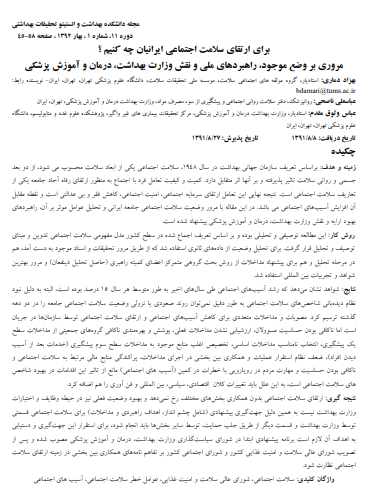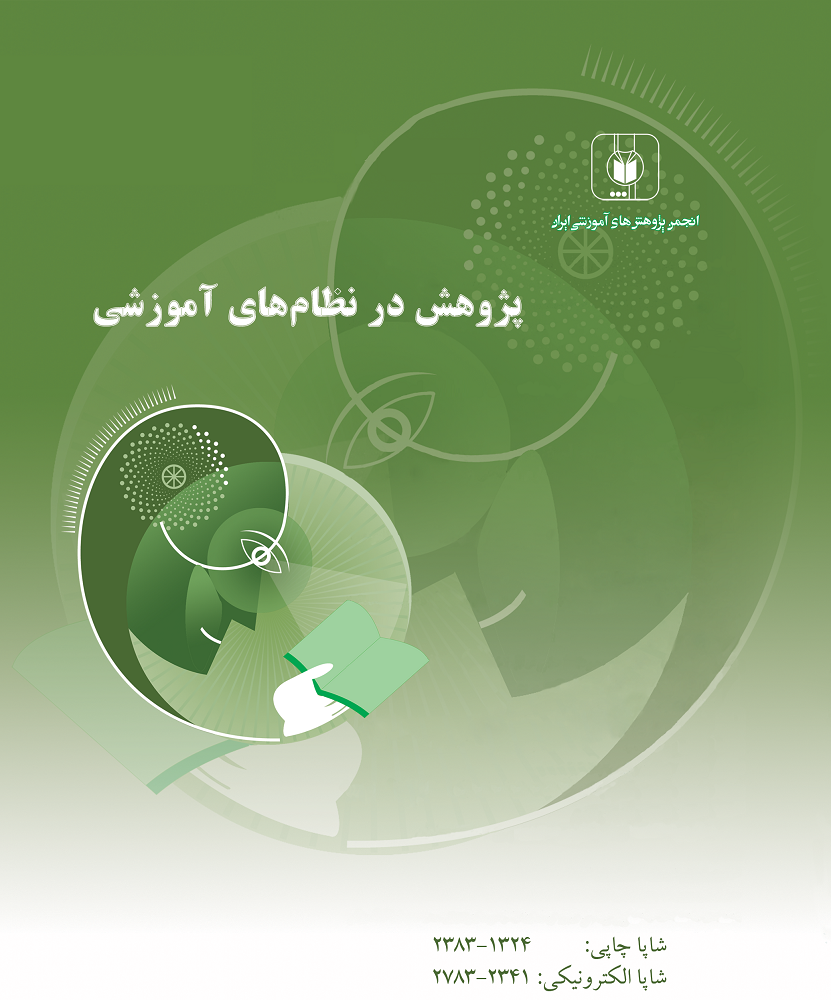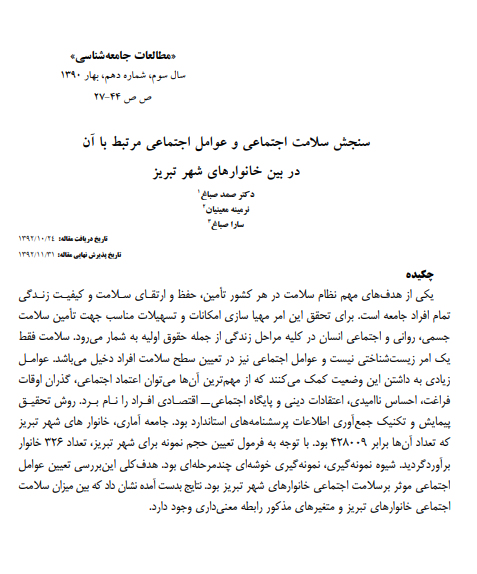What can we do to improve the social health of Iranians? A review of the current situation, national strategies, and the role of the Ministry of Health and Medical Education - کرسی یونسکو در سلامت اجتماعی و توسعه ucshd

What can we do to improve the social health of Iranians? A review of the current situation, national strategies, and the role of the Ministry of Health and Medical Education
What can we do to improve the social health of Iranians? A review of the current situation, national strategies, and the role of the Ministry of Health and Medical Education
01 01 2024 10:33
News Code : 93870806
View Count : 14
Abstract: (Original article)
Background and Objective: According to the definition of the World Health Organization in 1948, social health is considered one of the dimensions of health, and is affected by and has an interaction with two dimensions of health: physical and mental. The quantity and quality of an individual's interaction with society in order to improve the well-being of society is one of the definitions of social health. The final result of this interaction is the promotion of social capital, social security, and the reduction of poverty and injustice, and its opposite is the increase in social harms. In this article, by reviewing the social health status of Iranian society and analyzing the factors affecting it, strategies for improving the presentation and role of the Ministry of Health, Treatment and Medical Education are proposed.
Methodology: This study was descriptive and analytical, and based on the definition agreed upon at the national level, a conceptual model of social health was developed and used as the basis for description and analysis. Secondary data was used to analyze the situation, which was obtained through a review of existing research and documents. Both in the analysis stage and for proposing interventions, the method of focused group discussion of steering committee members (results of stakeholder analysis) and a review of the best international evidence and experiences were used.
Results: Evidence shows that the growth of social harms in recent years has been 15 percent on average each year. However, due to the lack of a monitoring system for social health indicators, it is not possible to accurately map the upward or downward trend of the social health status of the society in the past two decades. Numerous approvals and interventions are underway by organizations to reduce social harms and promote social health, but the insufficient sensitivity of officials, the lack of evaluation of current interventions, the insufficient coverage and benefit of population groups from level one prevention interventions, the inappropriate selection of basic interventions, the allocation of most of the available resources to level three prevention interventions (services after individuals are injured), the weakness of the system for establishing operations and inter-sectoral cooperation in implementing interventions, the dispersion of financial resources related to social health, and the insufficient sensitivity and skill of people in facing lurking dangers (social harms) prevent the effectiveness of these measures in improving social health indicators. To these reasons, we must also add macro-economic, political, international, and technological changes.
Conclusion: Promoting social health cannot occur without the cooperation of different sectors, and improving the current situation is not within the scope of the duties and authorities of the Ministry of Health. For this reason, the proposed orientation (including vision, strategic goals, and interventions) for social health should be implemented partly by the Ministry of Health and partly by other sectors through attracting support. To establish this orientation and achieve its goals, it is necessary that the proposed program is first approved by the Policy Council of the Ministry of Health, Treatment, and Medical Education, and after approval by the Supreme Council of Health and Food Security and the Social Council of the country, the inter-sectoral cooperation agreements in the field of promoting social health should be monitored.






